Feedback Stabilization Applied to Heart Rhythm Dynamics Using an Integro-Differential Method
Abstract
:1. Introduction
2. Formulation of a Stabilization Problem
- As noted above, small values of the control signal are needed (compared to the stabilized functions) when stabilization is achieved.
- It differs from other stabilization schemes by the absence of adjustable parameters and rough approximations in determining the control function. Control parameters and are determined by the properties of the unstable system itself.
3. Mathematical Model of Heart Rythm Dynamics Based on a Modified Van der Pol Equation
3.1. Problem Statement
3.2. Proposed Method
4. Numerical Results of Numerical Stabilization of a Modified Van der Pol Equation
5. Stochastic Perspective
5.1. Introductory Remarks
5.2. Additional Examples
6. Discussion
7. Conclusions
Author Contributions
Funding
Data Availability Statement
Conflicts of Interest
References
- Cohen, M.A.; Taylor, J.A. Short-term cardiovascular oscillations in man: Measuring and modelling the physiologies. J. Physiol. 2002, 542, 669–683. [Google Scholar] [CrossRef] [PubMed]
- Camm, A.J.; Naccarelli, G.V.; Mittal, S.; Crijns, H.J.G.M.; Hohnloser, S.H.; Ma, C.S.; Natale, A.; Turakhia, M.P.; Kirchhof, P. The Increasing Role of Rhythm Control in Patients with Atrial Fibrillation. J. Am. Coll. Cardiol. 2022, 79, 1932–1948. [Google Scholar] [CrossRef] [PubMed]
- Rappel, W.J. The physics of heart rhythm disorders. Phys. Rep. 2022, 978, 1–45. [Google Scholar] [CrossRef]
- Andrade, J.G.; Deyell, M.W.; Macle, L.; Wells, G.A.; Bennett, M.; Essebag, V.; Champagne, J.; Roux, J.F.; Yung, D.; Skanes, A.; et al. Progression of Atrial Fibrillation after Cryoablation or Drug Therapy. N. Engl. J. Med. 2023, 388, 105–116. [Google Scholar] [CrossRef] [PubMed]
- Behnia, S.; Ziaei, J.; Ghiassi, M.; Yahyavi, M. Comprehensive chaotic description of heartbeat dynamics using scale index and Lyapunov exponent. In Proceedings of the 6th International Conference on Chaotic Modeling and Simulation, CHAOS 2013, Istanbul, Turkey, 11–14 June 2013; pp. 77–84. [Google Scholar]
- Grudzinski, K.; Zebrowski, J.J.; Baranowski, R. Model of the sino-atrial and atrio-ventricular nodes of the conduction system of the human heart. Biomed. Technol. 2006, 51, 210–214. [Google Scholar] [CrossRef]
- Abbasi, M.; Javed, A.; Shahid, M.B. Forced Van der Pol oscillator based modeling of cardiac pacemakers. In Proceedings of the 2012 Cairo International Biomedical Engineering Conference (CIBEC), Giza, Egypt, 20–22 December 2012; pp. 166–170. [Google Scholar]
- Ferreira, B.B.; de Paula, A.S.; Savi, M.A. Chaos control applied to heart rhythm dynamics. Chaos Solitons Fractals 2011, 44, 587–599. [Google Scholar] [CrossRef]
- Grudzinski, K.; Zebrowski, J.J. Modeling cardiac pacemakers with relaxation oscillators. Phys. A 2004, 336, 153–162. [Google Scholar] [CrossRef]
- Das, S.; Maharatna, K. Fractional dynamical model for the generation of ECG like signals from filtered coupled Van-der Pol oscillators. Comput. Methods Programs Biomed. 2013, 112, 490–507. [Google Scholar] [CrossRef]
- Nazari, S.; Heydari, A.; Khaligh, J. Modified modeling of the heart by applying nonlinear oscillators and designing proper control signal. Appl. Math. 2013, 4, 972–978. [Google Scholar] [CrossRef]
- Zebrowski, J.J.; Grudzinski, K.; Buchner, T.; Kuklik, P.; Gac, J.; Gielerak, G.; Sanders, P.; Baranowski, R. Nonlinear oscillator model reproducing various phenomena in the dynamics of the conduction system of the heart. Chaos 2007, 17, 015121. [Google Scholar] [CrossRef]
- Domoshnitsky, A.; Goltser, Y. One approach to study stability of integro-differential equations. Nonlinear Anal. TMA 2001, 47, 3885–3896. [Google Scholar] [CrossRef]
- Domoshnitsky, A.; Maghakyan, A.; Puzanov, N. About Stabilization by Feedback Control in Integral Form. Georgian Math. J. 2012, 19, 665–685. [Google Scholar] [CrossRef]
- Goltser, Y.; Domoshnitsky, A. Bifurcation and stability of integro-differential equations. Nonlinear Anal. Theory Methods Appl. 2001, 47, 953–967. [Google Scholar] [CrossRef]
- Agarwal, R.P.; Domoshnitsky, A. Non-oscillation of the first-order differential equations with unbounded memory for stabilization by control signal. Appl. Math. Comput. 2006, 173, 177–195. [Google Scholar] [CrossRef]
- Lin, W.; Pu, Y.; Guo, Y.; Kurths, J. Oscillation suppression and synchronization: Frequencies determine the role of control with time delays. Europhys. Lett. 2013, 102, 20003. [Google Scholar] [CrossRef]
- Zhou, S.; Ji, P.; Zhou, Q.; Feng, J.; Kurths, J.; Lin, W. Adaptive elimination of synchronization in coupled oscillator. New J. Phys. 2017, 19, 083004. [Google Scholar] [CrossRef]
- Zhou, S.; Lin, W. Eliminating synchronization of coupled neurons adaptively by using feedback coupling with heterogeneous delays. Chaos 2021, 31, 023114. [Google Scholar] [CrossRef]
- Ott, E.; Grebogi, C.; Yorke, J.A. Controlling chaos. Phys. Rev. Lett. 1990, 64, 1196. [Google Scholar] [CrossRef]
- Pyragas, K. Control of chaos via an unstable delayed feedback controller. Phys. Rev. Lett. 2001, 86, 2265–2268. [Google Scholar] [CrossRef]
- Corduneanu, C. Integral Equations and Applications; Cambridge University Press: Cambridge, UK, 1991. [Google Scholar]
- Yahalom, A.; Puzanov, N. Time Dependent Stabilization of a Hamiltonian System. J. Phys. Conf. Ser. 2021, 1730, 012089. [Google Scholar]
- Yahalom, A.; Puzanov, N. Stabilization in the Instability Region Around the Triangular Libration Points for the Restricted Three-Body Problem. In Proceedings of the 13th Chaotic Modeling and Simulation International Conference, CHAOS2020, Florence, Italy, 9–12 June 2020; pp. 1065–1076. [Google Scholar]
- Sato, D.; Xie, L.H.; Sovari, A.A.; Tran, D.X.; Morita, N.; Xie, F.; Karagueuzian, H. Synchronization of chaotic early after depolarizations in the genesis of cardiac arrhythmias. Proc. Natl. Acad. Sci. USA 2009, 106, 2983–2988. [Google Scholar] [CrossRef] [PubMed]
- Christini, D.J.; Stein, K.M.; Markowitz, S.M.; Mittal, S.; Slotwiner, D.J.; Scheiner, M.A.; Iwai, S.; Lerman, B.B. Nonlinear-dynamical arrhythmia control in humans. Proc. Natl. Acad. Sci. USA 2001, 98, 5827–5832. [Google Scholar] [CrossRef] [PubMed]
- Pontryagin, L.S. Ordinary Differential Eqations; Nauka: Moscow, Russia, 1982. [Google Scholar]
- Han, X.; Kloeden, P.E. Random Ordinary Differential Equations and Their Numerical Solution; Springer: Singapore, 2017. [Google Scholar]
- Artemiev, S.S.; Averina, T.A. Numerical Analysis of Systems of Ordinary and Stochastic Differential Equations; VSP: Utrecht, The Netherlands, 1997. [Google Scholar]
- Eckmann, J.P.; Ruelle, D. Fundamental limitations for estimating dimensions and Lyapunov exponents in dynamical systems. Phys. D 1992, 56, 185–187. [Google Scholar] [CrossRef]
- Ott, W.; Yorke, J.A. When Lyapunov exponents fail to exist. Phys. Rev. E 2008, 78, 056203. [Google Scholar] [CrossRef]
- Barreira, L.; Schmeling, J. Sets of ‘Non-Typical’ Points Have Full Topological Entropy and Full Hausdorff Dimension. Israel J. Math. 2000, 116, 29. [Google Scholar] [CrossRef]
- Yahalom, A.; Lewkowicz, M.; Levitan, J.; Elgressy, G.; Horwitz, L.P.; Ben-Zion, Y. Uncertainty Relation for Chaos. Int. J. Geom. Methods Mod. Phys. 2015, 12, 1550093. [Google Scholar] [CrossRef]
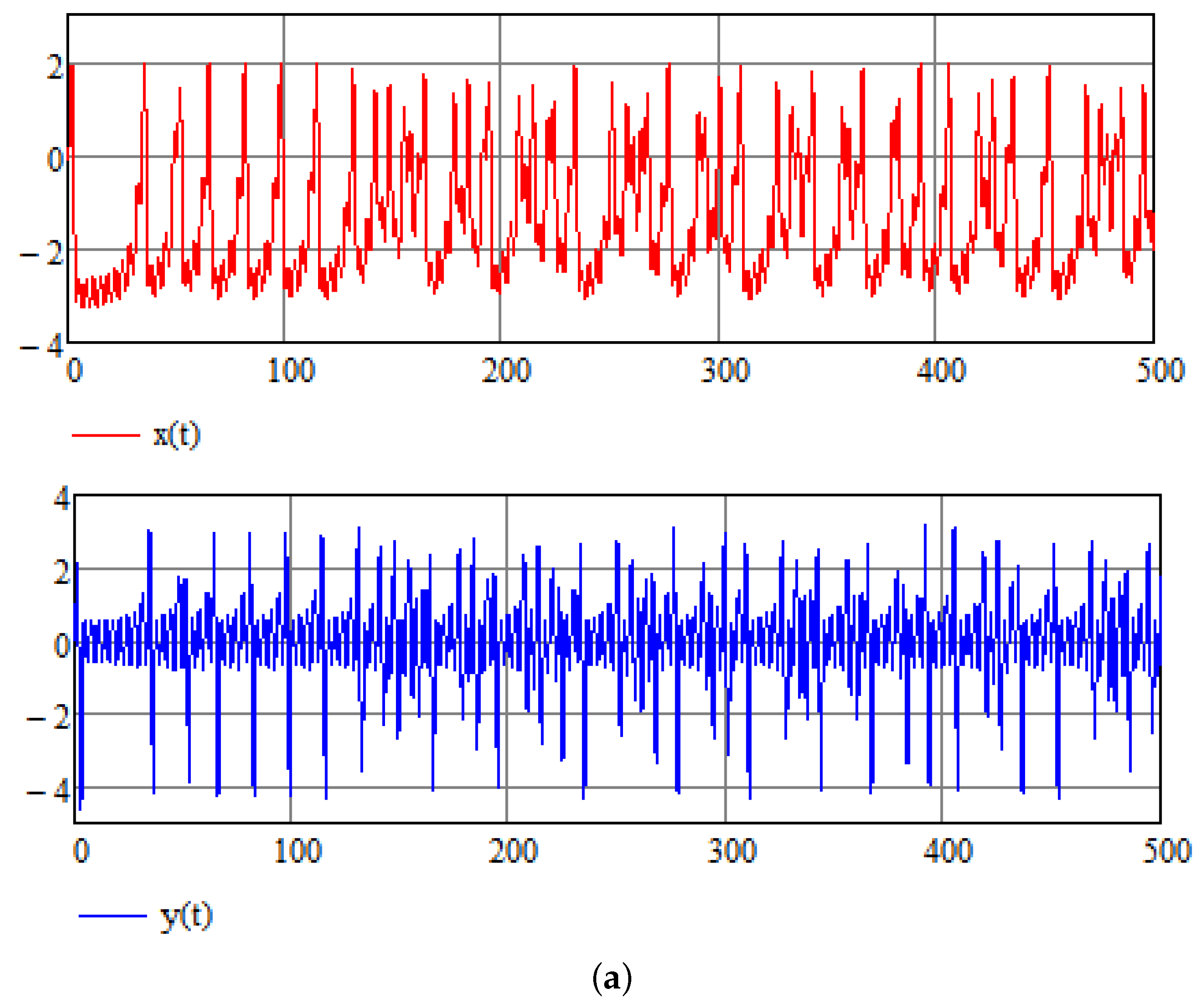

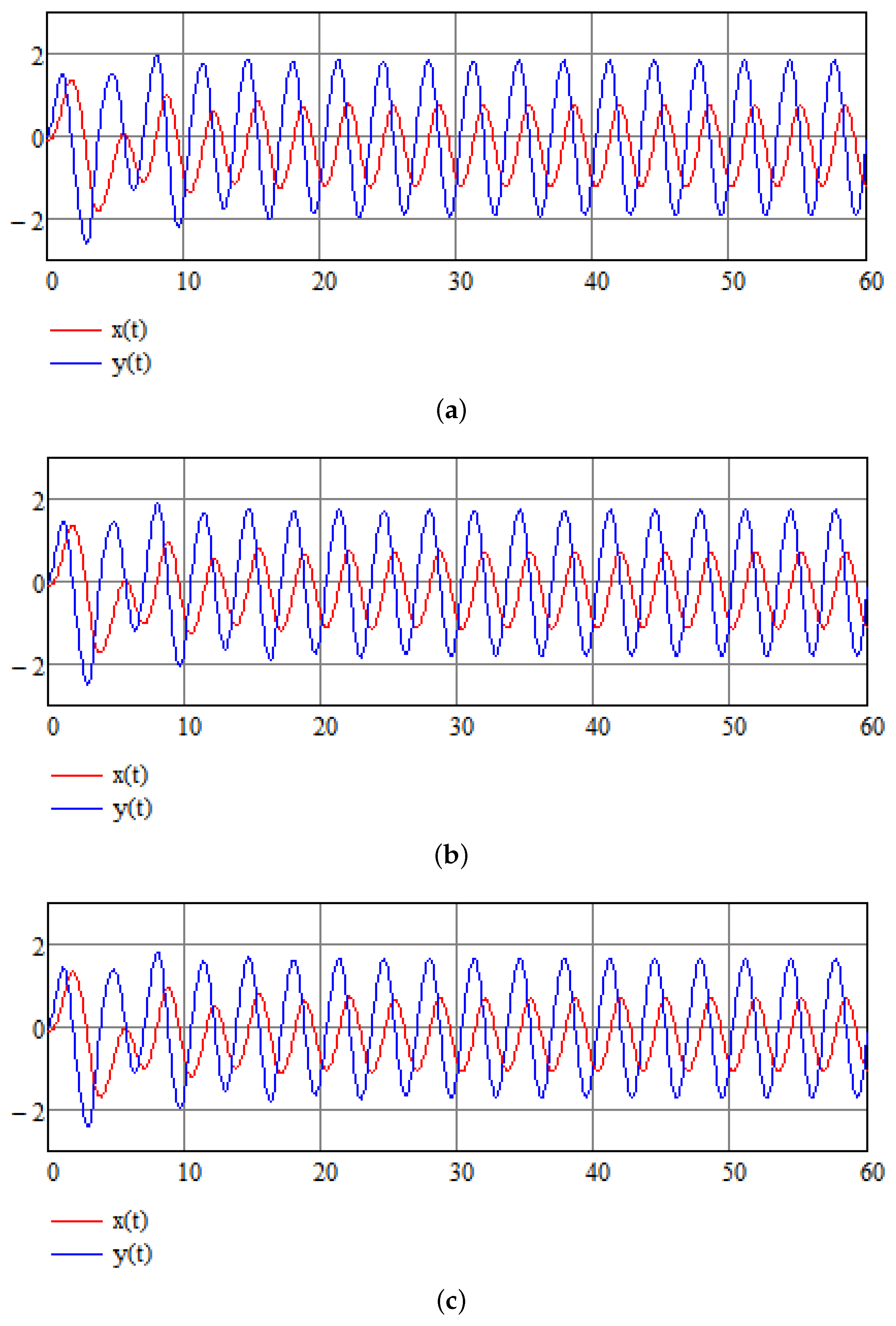
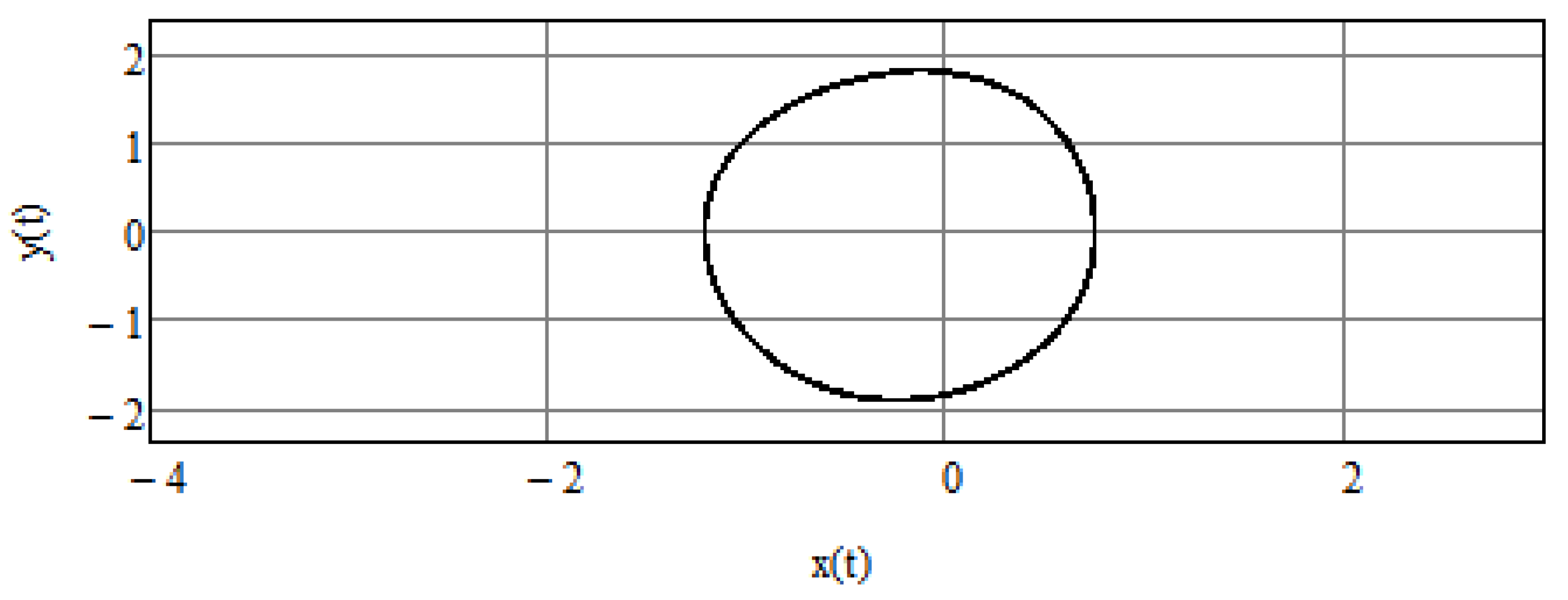
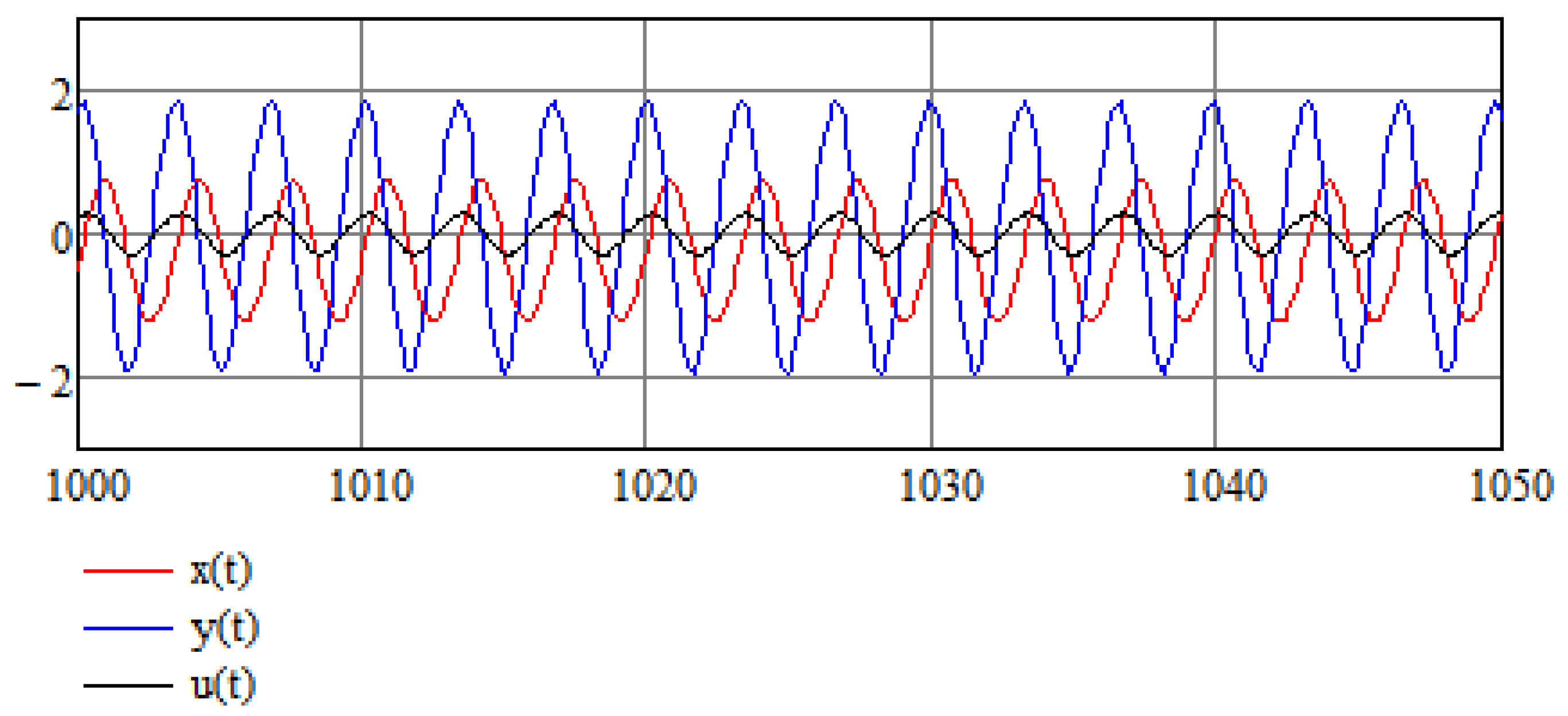
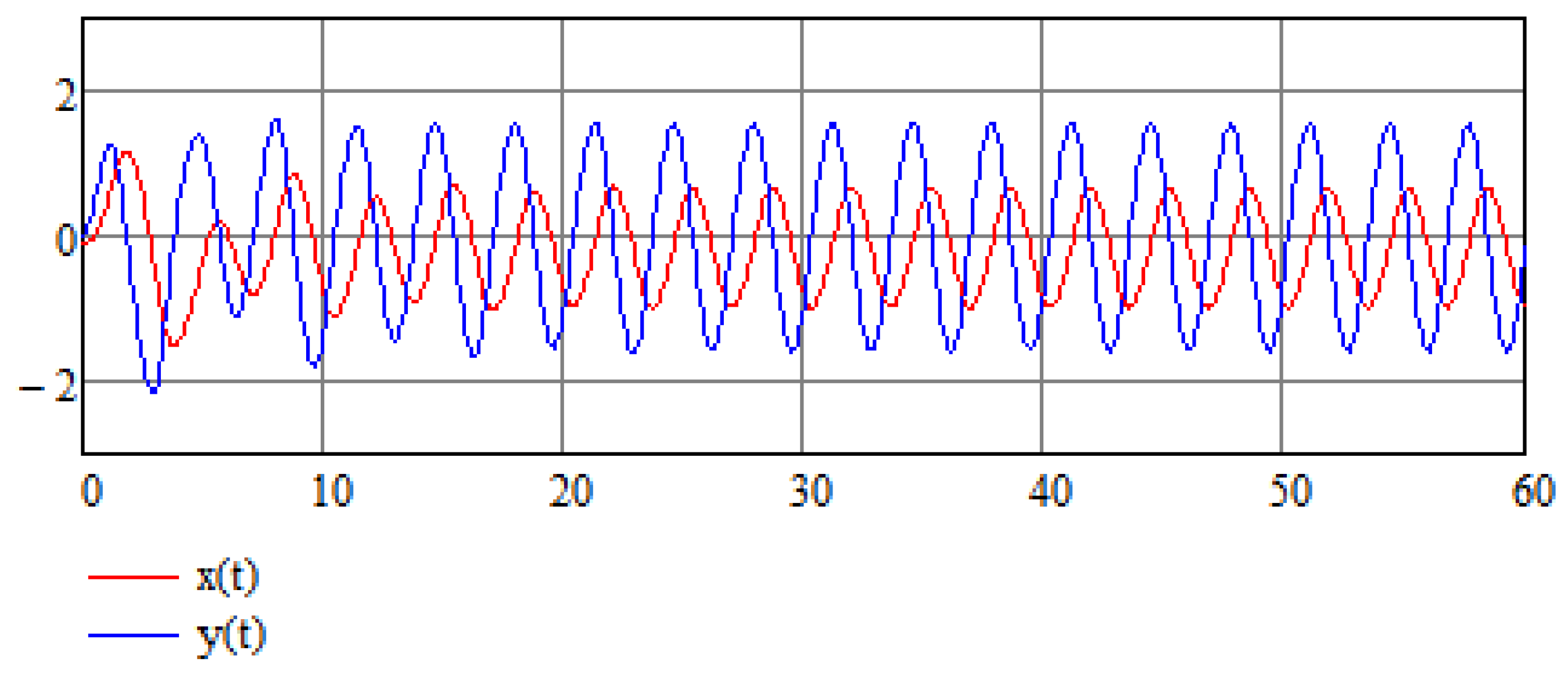
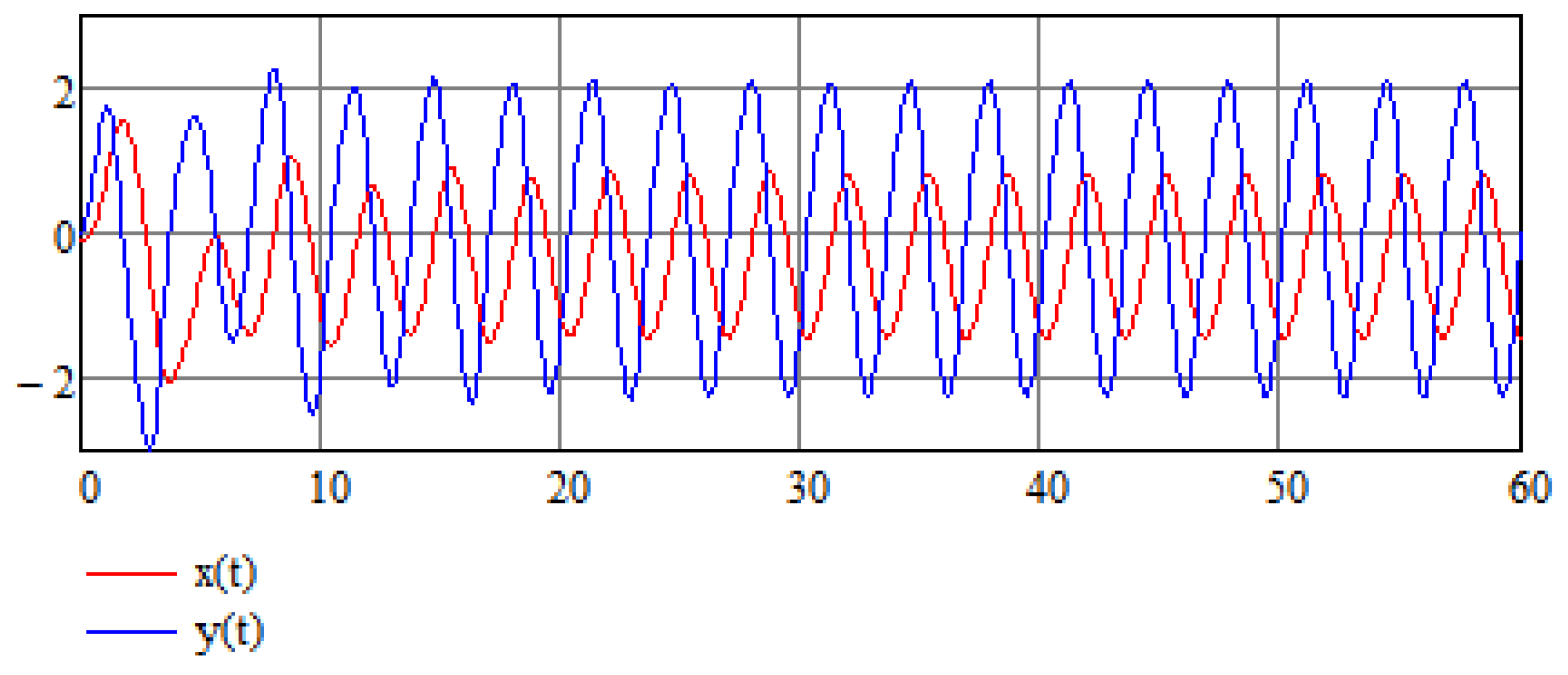
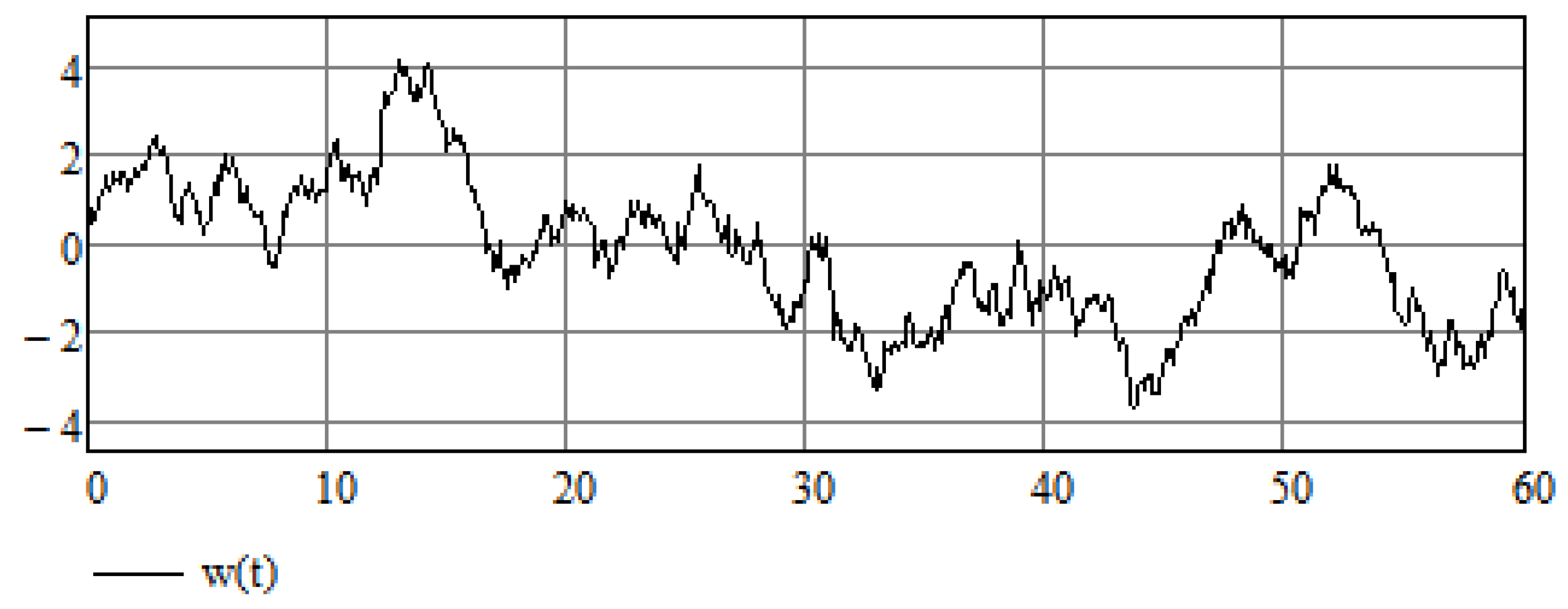


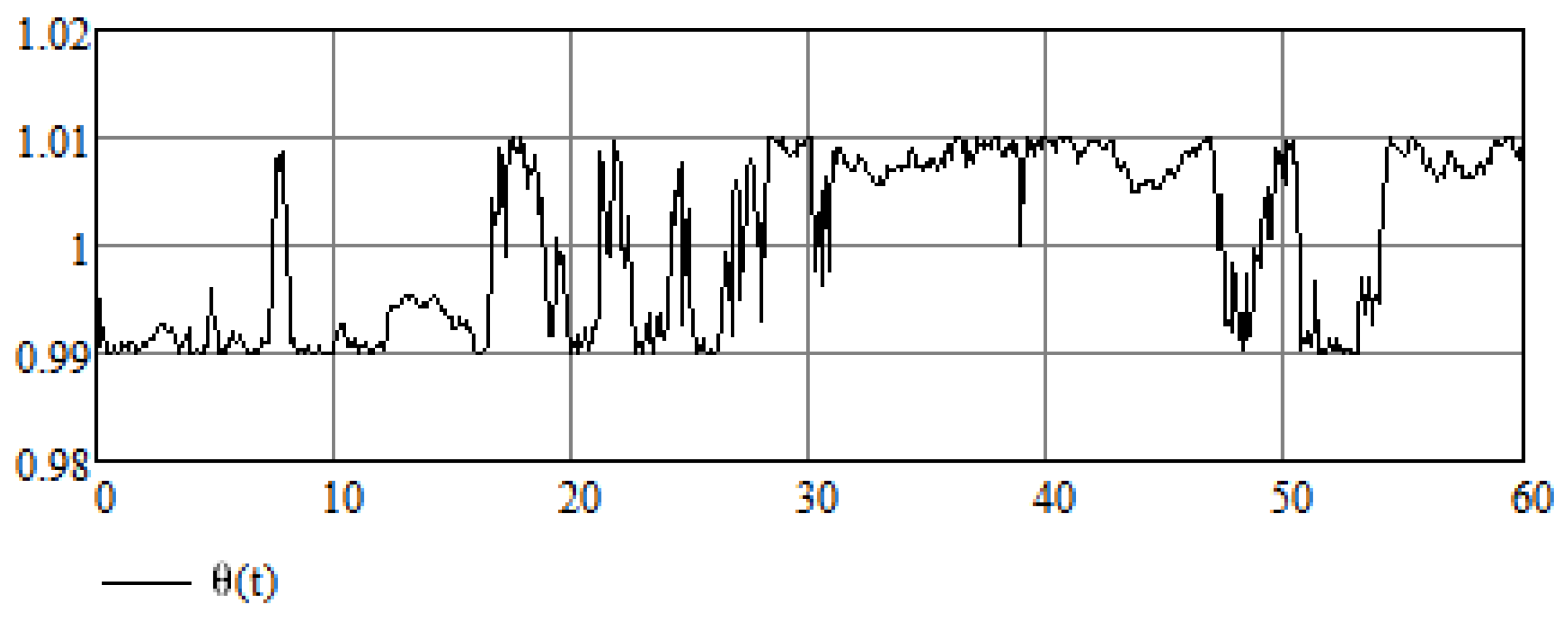
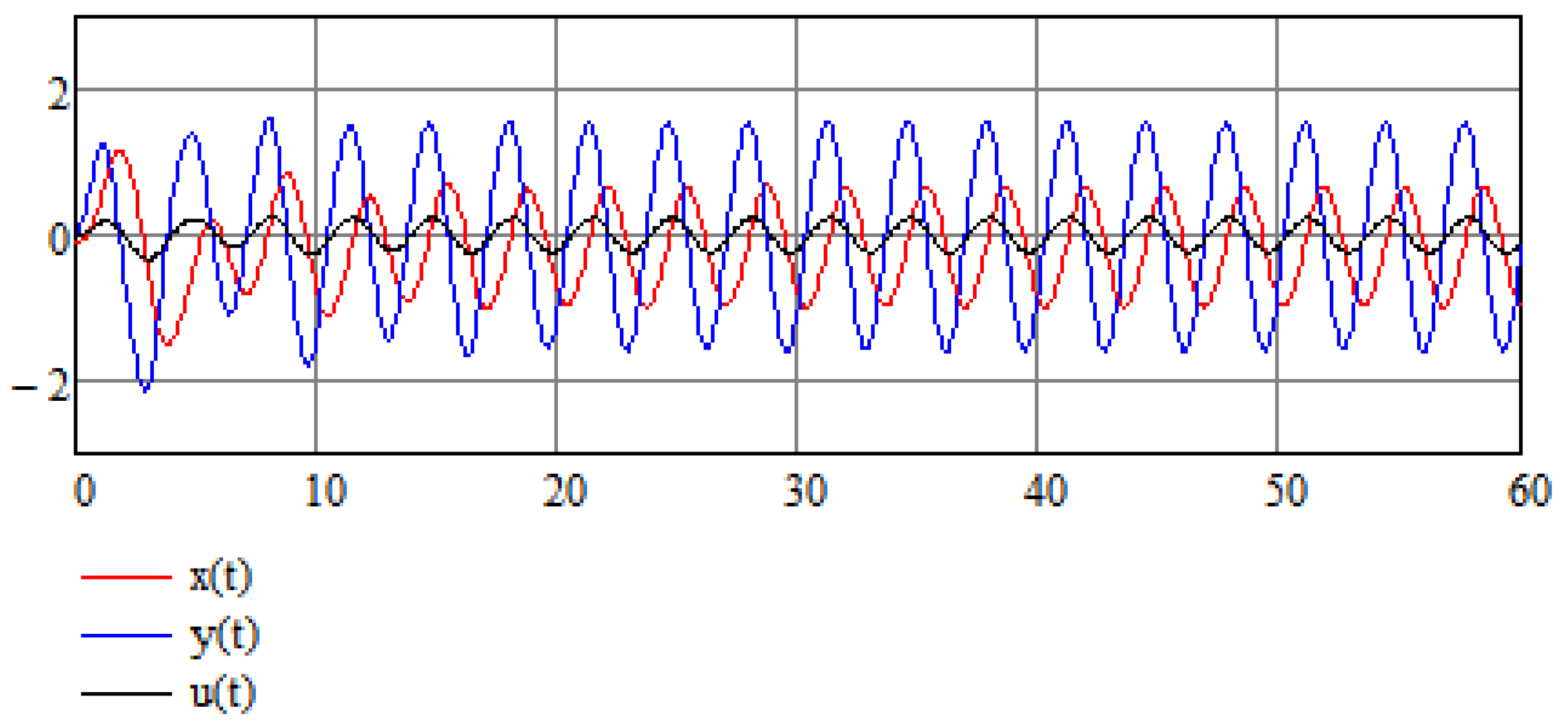

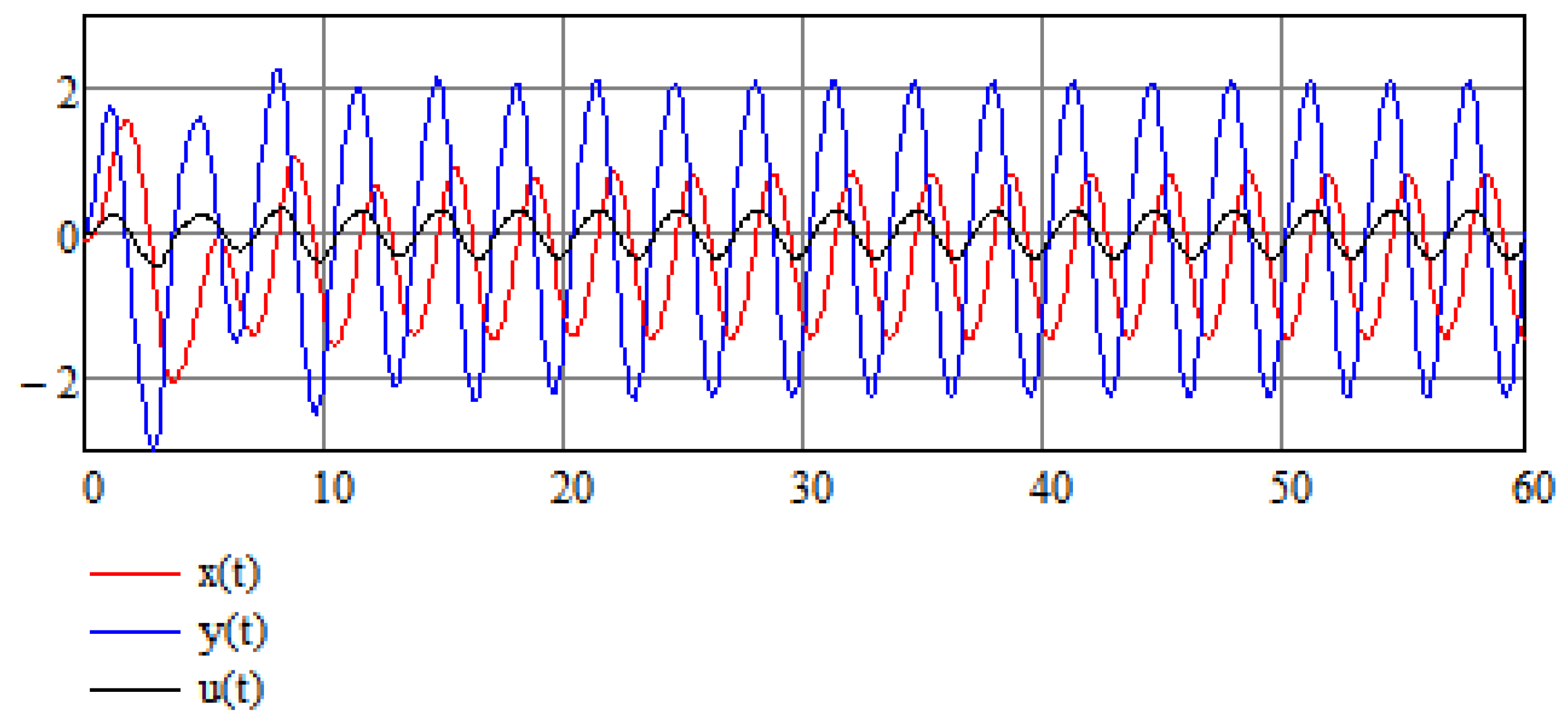
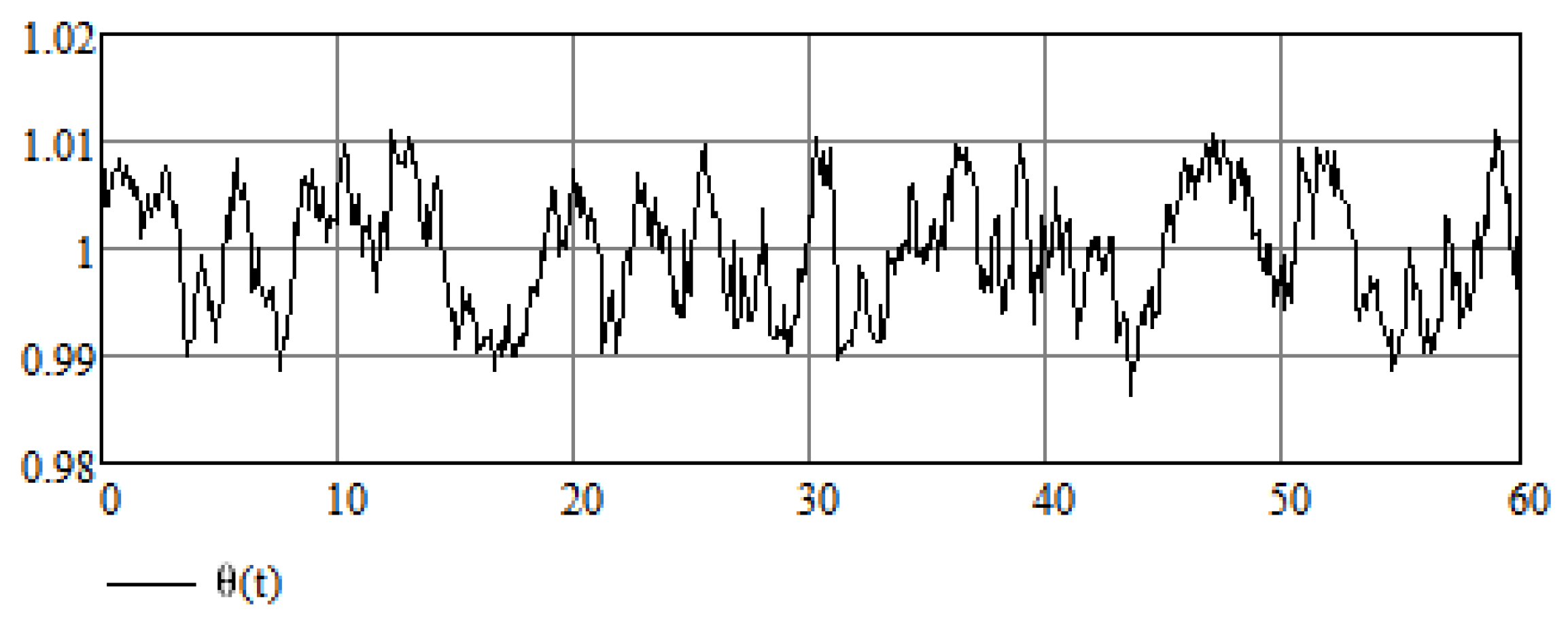
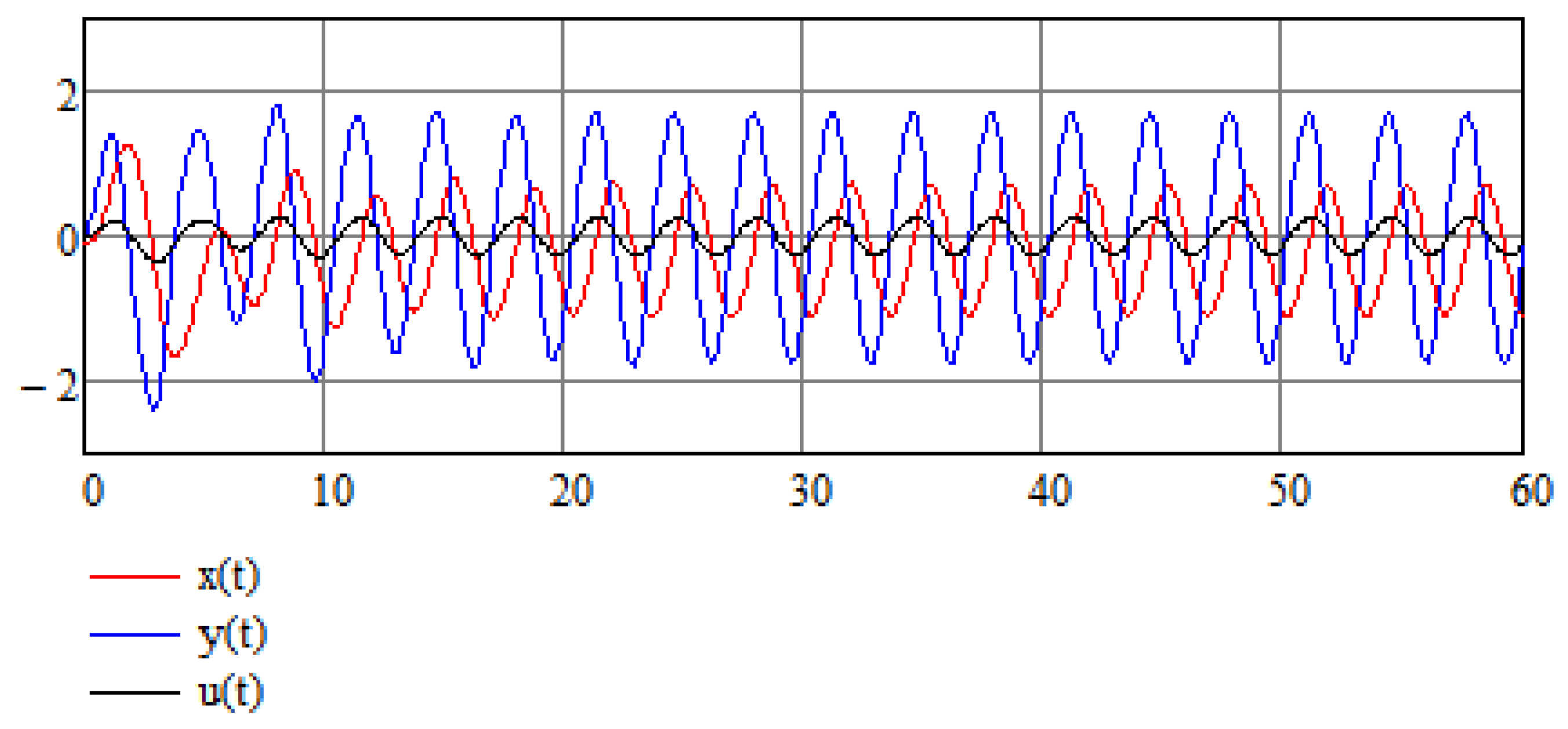
Disclaimer/Publisher’s Note: The statements, opinions and data contained in all publications are solely those of the individual author(s) and contributor(s) and not of MDPI and/or the editor(s). MDPI and/or the editor(s) disclaim responsibility for any injury to people or property resulting from any ideas, methods, instructions or products referred to in the content. |
© 2024 by the authors. Licensee MDPI, Basel, Switzerland. This article is an open access article distributed under the terms and conditions of the Creative Commons Attribution (CC BY) license (https://creativecommons.org/licenses/by/4.0/).
Share and Cite
Yahalom, A.; Puzanov, N. Feedback Stabilization Applied to Heart Rhythm Dynamics Using an Integro-Differential Method. Mathematics 2024, 12, 158. https://doi.org/10.3390/math12010158
Yahalom A, Puzanov N. Feedback Stabilization Applied to Heart Rhythm Dynamics Using an Integro-Differential Method. Mathematics. 2024; 12(1):158. https://doi.org/10.3390/math12010158
Chicago/Turabian StyleYahalom, Asher, and Natalia Puzanov. 2024. "Feedback Stabilization Applied to Heart Rhythm Dynamics Using an Integro-Differential Method" Mathematics 12, no. 1: 158. https://doi.org/10.3390/math12010158





